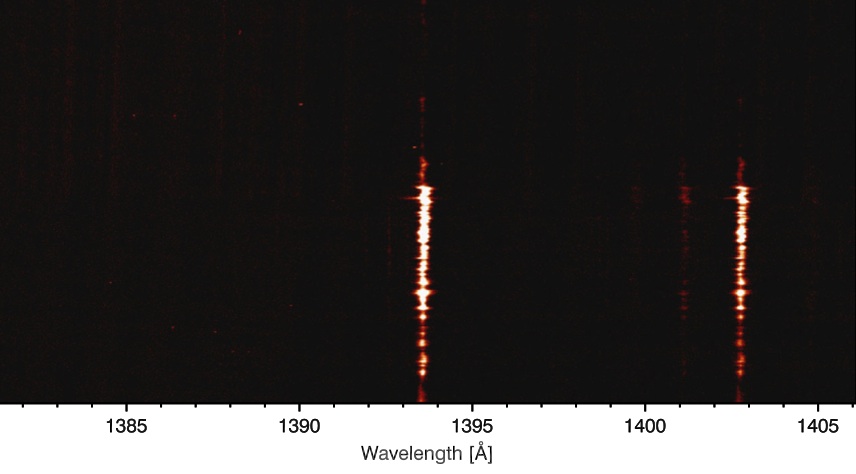2. Exercise questions¶
The following list of questions is a test of your knowledge of IRIS.
2.1. IRIS and data¶
2.1.1. What is the recommended IRIS data level for new users?¶
- Level 0 data
- Level 1 data
- Level 2 data
- Level 3 data
2.1.2. Which of the following statements is TRUE?¶
- Level 2 data is level 1.5 data with cosmic rays removed
- For SJIs there is no level 3 data
- For spectral rasters, level 3 data cubes have a maximum of three dimensions
- Level 1 data are flat-fielded and dark-subtracted
2.1.3. Were there limb observations on the 1st of March 2014?¶
2.1.4. With an OBS-ID=3800111235, what is the exposure time? How many steps has the raster?¶
2.1.5. Which of the following statements is TRUE?¶
- It is possible to observe simultaneously in the FUV and NUV slit-jaws
- The planning for IRIS observations takes place once per week
- IRIS level 1 data is only available from the University of Oslo
- The eclipse season of IRIS is from November to February
2.1.6. When observing a very large sit and stare with a 10s cadence and exposing the full detectors, how long can you observe until the spacecraft memory fills up (assume it was empty)?¶
2.1.7. Which of the following statements is FALSE?¶
- Observing with a roll angle other than 0 can decrease the telemetry rate
- The strongest line in the FUV 1 window is the Si IV 139 nm line
- The step size of a dense raster is about 0.35 arcsec
- The 283.2 nm slit-jaw image is formed in the chromosphere
2.1.8. Which of the following statements is TRUE?¶
- The average data upload rate of IRIS is 0.7 Mbit/s
- IRIS has a geosynchronous orbit
- The IRIS motors allow it to safely point anywhere in the Sun in just a few seconds
- IRIS gets colder when orbiting over Greenland, and this shifts the spectral lines
2.2. IRIS spectral lines¶
2.2.1. What is the approximate temperature coverage of the spectral lines observed by IRIS?¶
- 10,000 K to 20,000 K
- 5,000 K to 50,000 K
- 4,500 K to 10,000,000 K
- 10,000 K to 500,000 K
2.2.2. Which of the following statements is FALSE?¶
- The IRIS 279.6 nm SJI is the best channel to align with the AIA coronal channels (17.1, 9.3, 21.1 nm, etc.)
- The IRIS 140.0 nm SJI is the best channel to align with the AIA 170.0 nm channel
- The IRIS 283.2 nm SJI is the best channel to align with the HMI continuum image
- The WCS keywords in the IRIS file headers are obtained by cross correlation of the slit-jaw images with AIA
2.2.3. Which of these lines is formed in higher temperatures?¶

You will need to click on the correct line when answering.
2.2.4. Which of the following statements is TRUE?¶
- The spectral lines in the NUV window provide velocity diagnostics for several heights from the photosphere to the mid chromosphere
- The spectral lines in the FUV 1 window provide temperature diagnostics for several heights from the convective zone to the photosphere
- The C II lines at 133.5 nm have a higher signal to noise ratio than the Mg II h and k lines
- The Fe XII line is observed only in the quiet sun
2.3. CRISPEX¶
2.3.1. What data formats cannot be used with CRISPEX?¶
- La Palma cube format
- IRIS level 3 FITS files
- Any FITS file
2.3.2. Which of the following statements is TRUE?¶
- The im files contain the images, while the sp files contain the spectra
- The sp files are a transposed version of the im files for faster reading
- The im files contain Stokes I, while the sp files contain Stokes U, Q, V
- The sp files must always be used, while the im files are optional
2.3.3. Which of the following statements is FALSE?¶
- CRISPEX uses the WCS keywords in the IRIS files to calculate the solar (x, y) coordinates
- With IRIS files CRISPEX loads the first timestep into memory to calculate scaling factors
- The y scale of the detailed spectrum window can be adjusted in the Displays tab
- The maximum animation speed is 10 frames per second